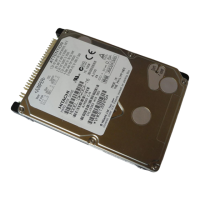section, part of level 3 RAID technology is explained to make the outline of
RAID5 more understandable). The features of the levels of RAID technologies
are described below.
Array groups and RAID levels
The array group (also called parity group) is the basic unit of storage capacity
for the HUS VM storage system. It is a set of four physical drives installed
into any disk trays (in any “roaming” order on HUS VM). When a set of one or
two such Array Groups (four or eight drives) is formatted using a RAID level,
the resulting RAID formatted entity is called a Parity Group. Although
technically the term Array Group refers to a group of bare physical drives,
and the term Parity Group refers to something that has been formatted as a
RAID level and therefore actually has initial parity data (here we consider a
RAID-1 mirror copy as parity data), be aware that this technical distinction is
often lost. You will see the terms Parity Group and Array Group used
interchangeably in the field.
The HUS VM supports the following RAID levels: RAID 1, RAID 5, and RAID 6.
RAID 0 is not supported on the HUS VM. When configured in four-drive RAID
5 parity groups (3D+1P), three-fourths of the raw capacity is available to
store user data, and one fourth of the raw capacity is used for parity data.
RAID 1
The following two figures illustrate the RAID 1configurations. The tables
following the figures describes each configuration.
Item Description
Description Mirror disks (duplicated writing) Two disk drives, primary and
secondary disk drives, compose a RAID pair (mirroring pair) and the
Hardware architecture
2-3
Hitachi Unified Storage VM Block Module Hardware User Guide

